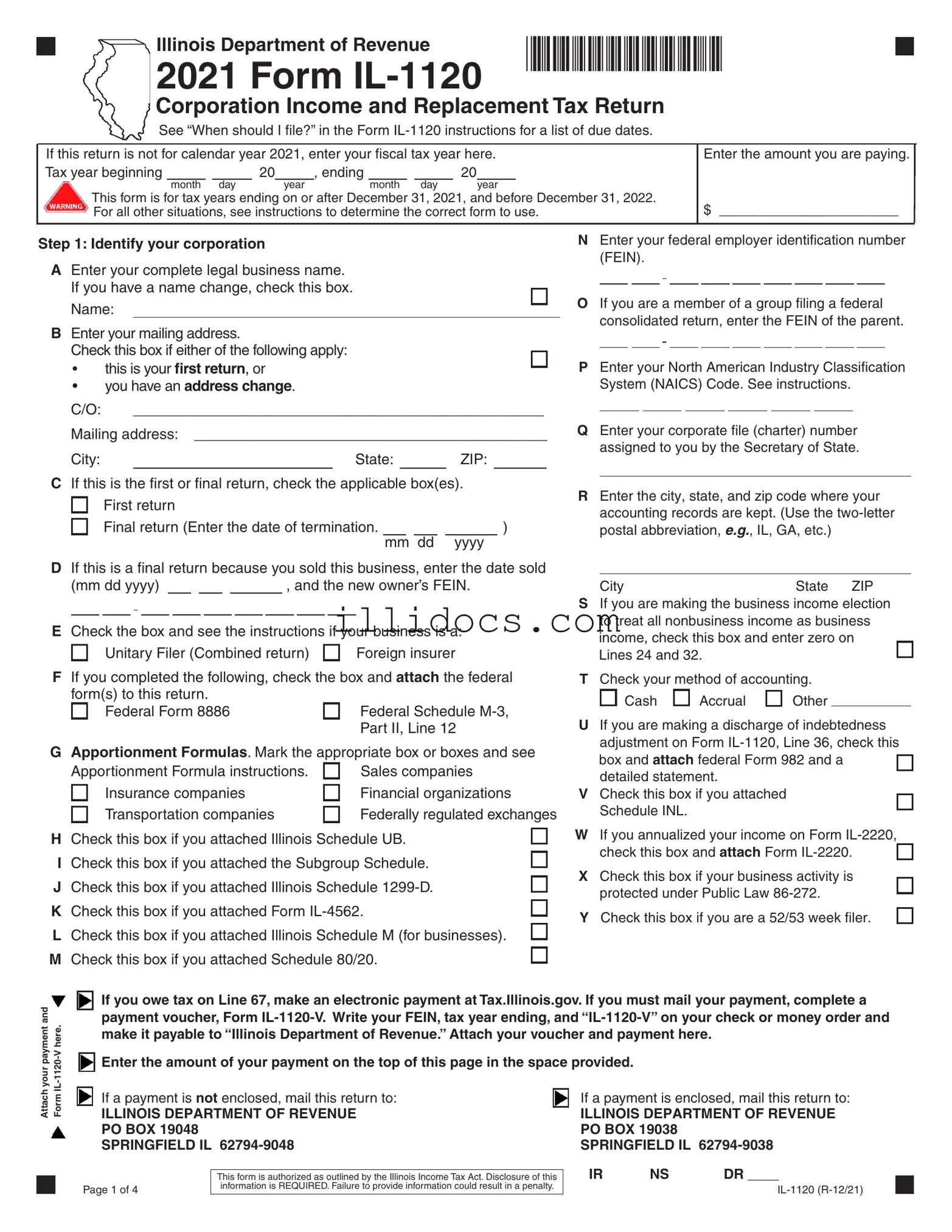What is the Illinois 1120 form?
The Illinois 1120 form is a tax return specifically designed for corporations operating in Illinois. It is used to report income and calculate the state's income and replacement taxes for the tax year. This form is applicable for tax years ending on or after December 31, 2020, and before December 31, 2021. Corporations must complete this form accurately to comply with state tax regulations.
When is the Illinois 1120 form due?
The due date for filing the Illinois 1120 form generally aligns with the federal corporate tax return deadlines. If your corporation operates on a calendar year basis, the form is typically due on the 15th day of the 4th month following the end of your tax year. For fiscal year filers, check the specific instructions to determine the exact due date based on your fiscal year-end.
What information do I need to provide on the form?
When completing the Illinois 1120 form, you will need to provide various details about your corporation. This includes your legal business name, mailing address, federal employer identification number (FEIN), and the NAICS code. You will also need to report your federal taxable income, any deductions, and calculate your base income or loss. Be sure to attach any required supporting documents, such as federal forms and schedules.
How do I calculate my replacement tax?
The replacement tax is calculated by taking your net income and multiplying it by 2.5%. After determining your net income, you will add any recapture of investment credits to arrive at your total replacement tax before credits. Then, subtract any investment credits to find your replacement tax after credits. If the final amount is negative, you will enter zero.
What if I need to amend my Illinois 1120 form?
If you discover an error after submitting your Illinois 1120 form, you can file an amended return. To do this, you will need to use the appropriate form and indicate that it is an amendment. Make sure to provide a clear explanation of the changes and attach any necessary documentation to support your amendments.
Where do I send my completed Illinois 1120 form?
Once you have completed the Illinois 1120 form, you should send it to the address specified in the instructions for the form. If you owe taxes, include your payment with the form. For electronic payments, you can visit Tax.Illinois.gov. Always check the latest instructions for any updates on mailing addresses or electronic filing options.
